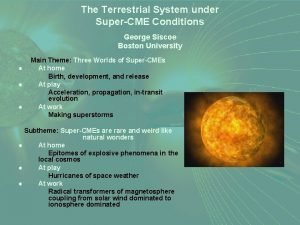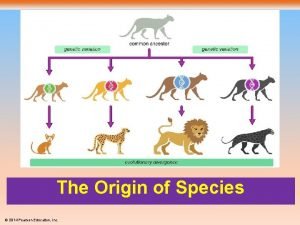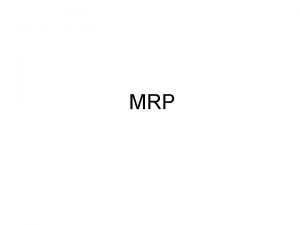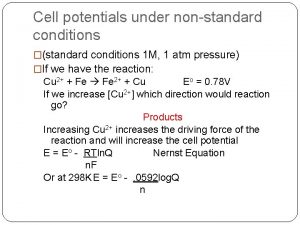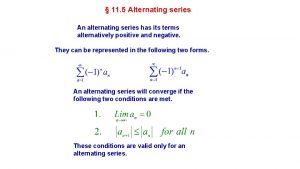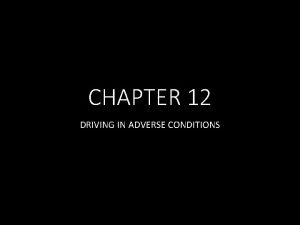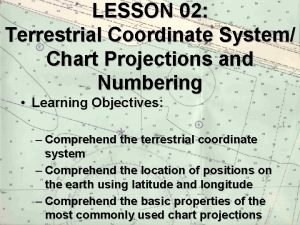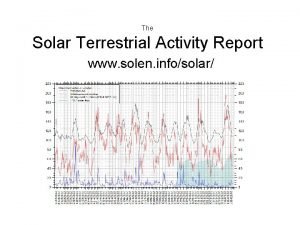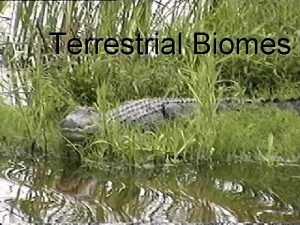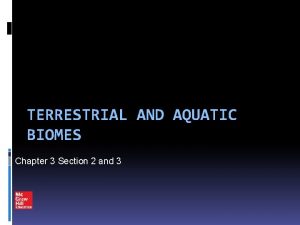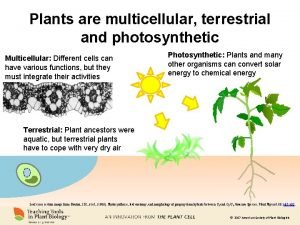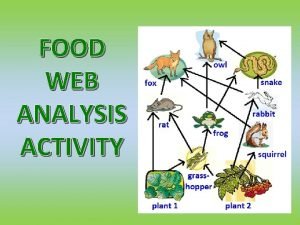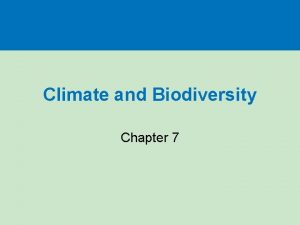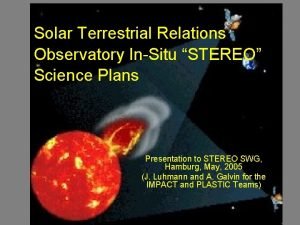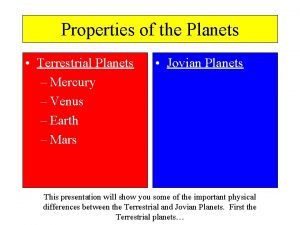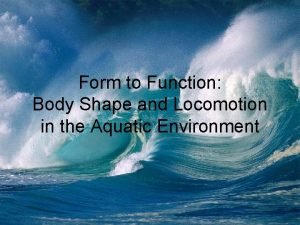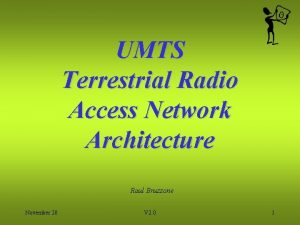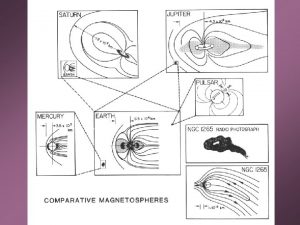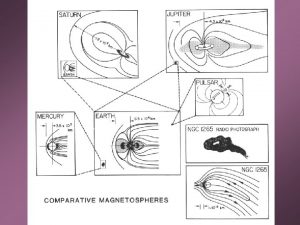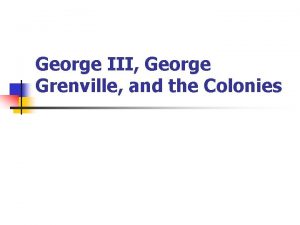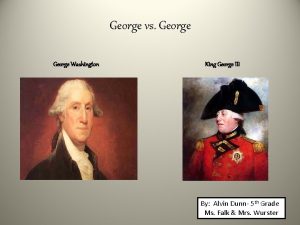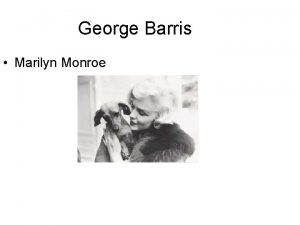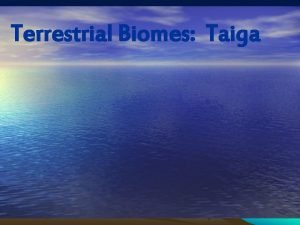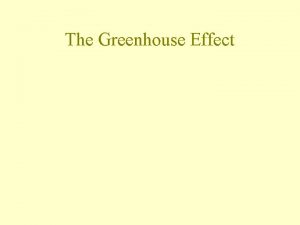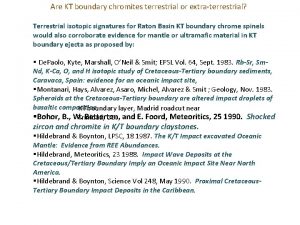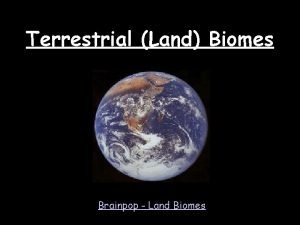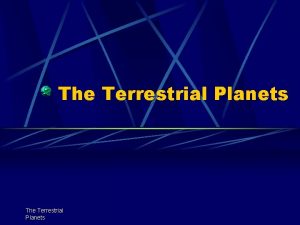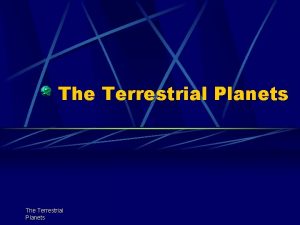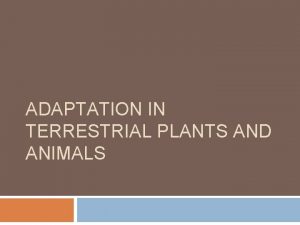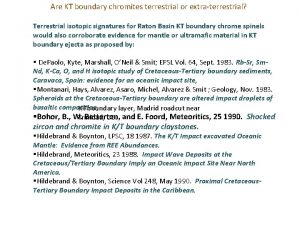The Terrestrial System under SuperCME Conditions George Siscoe


































- Slides: 34

The Terrestrial System under Super-CME Conditions George Siscoe Boston University ● ● ● Main Theme: Three Worlds of Super-CMEs At home Birth, development, and release At play Acceleration, propagation, in-transit evolution At work Making superstorms Subtheme: Super-CMEs are rare and weird like natural wonders ● At home Epitomes of explosive phenomena in the local cosmos ● At play Hurricanes of space weather ● At work Radical transformers of magnetosphere coupling from solar wind dominated to ionosphere dominated

Super-CMEs at Home Birth, Development, and Release Relation to active region, prominences, and “sigmoids” Illustrated by event on November 4, 2001 Continuum Magnetogram H alpha Soft X-ray Composite

Photospheric Field Topology of Titov & Démoulin 1999 Model upper separatrix lower separatrix upper separatrix

Relation to magnetic arcades Illustrated by Bastille Day event

Release Mechanisms Flux Cancellation Breakout Terry Forbes Spiro Antiochos

Conditions at Eruption

Observable Implication of CME Models (Crooker, 2005) • • • FLUX-CANCELLATION MODEL Dipolar fields reconnect Leading field matches dipolar component • • • BREAKOUT MODEL Quadrupolar fields reconnect Leading field opposes dipolar component • Taken at face value, imprint of dipolar component on leading field and leg polarity favors streamer over breakout model by ~80%.

Super-CMEs at Play Acceleration, propagation, in-transit evolution 1500 1250 Jie Zhang data 1000 750 500 250 50 100 150 200

Three Phases of CME Expansion Inflationary Phase MHD simulation Pete Riley Geometrical Dilation + Radial Expansion Phase Sun CME Pre-CME Growth Phase

Information on Interplanetary CME Propagation 1400 1200 Gopalswamy et al. , GRL 2000: statistical analysis of CME deceleration between ~15 Rs and 1 AU 1000 800 600 400 200 50 Reiner et al. Solar Wind 10 2003: constraint on form of drag term in equation of motion 100 150 200 drag Cd ρ (V-Vsw)2 Standard Form Observed

Information on CME Parameters at 1 AU Vršnak and Gopalswamy, JGR 2002: velocity range at 1 AU << than at ~ 15 Rs Owen et al. 2004: expansion speed CME speed; B field uncorrelated with speed; typical size ~ 40 Rs Lepping et al, Solar Physics, 2003: Average density ~ 11/cm 2; average B ~ 13 n. T 80 Accelerate Vexp = 0. 266 Vcme – 71. 61 60 40 Decelerate 20 350 400 450 500 550 600

Analytical model of CME Acceleration and Propagation Generalized buoyancy Variable drag coefficient Satisfies Gopalswamy template Satisfies Reiner template Virtual mass Comparison with MHD simulation Velocity (km/s) Acceleration (m/s/s) Elliptical cross section MHD Simulation Gopals No Virtual Mass wamy et. Analytical al. 1000 1400 1200 400 800 1000 300 600 800 Virtual Mass Variab 600 200 400 100 200 Circular CME le C D Fixed C D drag Cd ρ (V-Vsw)2 Standard Form 1. 5 Observed 10250 2. 520 100 50 5 3 30 3. 5 150440 4. 5200 Distance from Sun (Rs) Distance from the. Center Sun (Rs) Distance from Sun (Rs)

Predictability (Crooker) 1500 • • • Cloud axis – Aligns with filament 1250 axis (low) and HCS (high) – Directed along dipolar 1000 field distorted by differential rotation Leading 750 field – Aligns with coronal dipolar field (high) 500 Application – First part predicts the rest (Chen et al. , 1997) • • Cloud axis orientation, Fair – 28/50 (56%) align within 30° of neutral line [Blanco et al. , 2005] Leading field, Good – 33/41 (80%) match solar dipolar component with 2 -3 year lag [Bothmer and Rust, 1997] – 28/38 (74%) from PVO match [Mulligan et al. , 1998] 250 from Crooker, 2004 50 100 150 200

CME Propagation Models 1500 • • 1250 model of CME Empirical deceleration (Gopalswamy et al. , 2000) 1000 Analytical model of CME propagation (Siscoe, 2004) 750 Numerical simulation 0. 5 to 50 AU (Odstrcil et al. , 2001) 500 Numerical simulation 1 Rs to 1 AU with 250 two codes (Odstrcil et al. , 2002) 50 Gopalswamy Template 1400 1200 1000 800 600 400 200 50 100 150 200

Super-CMEs at Work Making Superstorms • • • Psw distributions in CIRs and CMEs (Lindsay et al. , 1995) Ey distributions in CIRs and CMEs (Lindsay et al. , 1995) Geo. Impact of CMEs (Gosling, 1990) Solar Wind Ionosphere Dominated Dynamic Pressure (n. Pa)

The Terrestrial System under Super-CME Conditions ● ● Vasyliunas Dichotomization Solar wind dominated Ionosphere dominated Solar wind dominated Global force balance via Chapman-Ferraro current system Dst responds to ram pressure Ionosphere dominated Global force balance via region 1 current system Neutral flywheel effect No (direct) Dst response to ram pressure Magnetopause erosion Transpolar potential saturation (TPS) Equivalent to ionosphere dominated regime Evidence for TPS and the Hill model parameterization

Vasyliunas Dichotomization Vasyliunas (2004) divided magnetospheres into solar wind dominated and ionosphere dominated depending on whether the magnetic pressure generated by the reconnection-driven ionospheric current is, respectively, less than or greater than the solar wind ram pressure. The operative criterion is o PVAε ~ 1 SP = ionospheric Pedersen conductance VA = Alfvén speed in the solar wind ε = magnetic reconnection efficiency Key Point By this criterion, the standard magnetosphere is solar wind dominated; the storm-time magnetosphere, ionosphere dominated.

Pertinent Properties of the Standard Magnetosphere Chapman & Ferraro, 1931 Chapman-Ferraro Current System Midgley & Davis, 1963 z ICF = BSS Zn. p. / o 3. 5 MA C-F compression = 2. 3 dipole field x 2 x 107 N

Ram Pressure Contribution to Dst A Chapman-Ferraro property GOES 8 April 2000 storm Huttunen et al. , 2002 Chapman-Ferraro Compression Psw compresses the magnetosphere and Increases the magnetic field on the dayside.

Interplanetary Electric Field Determines Transpolar Potential ● Magnetopause reconnection ● Equals transpolar potential ● Transpolar potential. Evaries linarly with Ey (Boyle et al. , 1997)B ● V Magnetosphere a voltage source as seen by ionosphere Transpolar Potential (k. V) A magnetopause reconnection property 500 400 300 200 100 5 10 Ey (m. V/m) IMF = (0, 0, -5) n. T 15 20

Solar Wind Dominated Magnetosphere Summary ● Psw compresses the magnetospheric field and increases Dst. ● Ey increases the transpolar potential linearly. ● Magnetosphere a voltage source Key Point Field compression and linearity of response to Ey hold for only one of the two modes of magnetospheric responses to solar wind drivers—the usual one.

Then Came Field-Aligned Currents Iijima & Potemra, 1976 1 MA/10 Re Region 1 Atkinson, 1978 Region 2 5. 5 MA A C-F Total Field-Aligned Currents for Moderate Activity (IEF ~1 m. V/m) Region 1 : 2 MA Region 2 : 1. 5 MA Tail R 1 5 3. M Question: How do you self-consistently accommodate the extra 2 MA?

Answer: You Don’t. You replace the Chapman-Ferraro current with it. IMF = (0, 0, -5) n. T

Region 1 Force on Earth Region 1 Current Contours Region 1 Current Streamlines 5 x 106 N IMF = (0, 0, -5) n. T

Impact of Region 1 Currents on Understanding Solar Wind-Magnetosphere Coupling Summary ● Ionosphere and solar wind in “direct” contact ● Solar wind can pull on ionosphere as well as push on earth. ● Region 1 currents can usurp Chapman-Ferraro currents. ● Influence of ionosphere coupling increases relative to Chapman. Ferraro coupling as interplanetary electric field (Ey) increases. Key Point During major magnetic storms, this leads to an ionosphere dominated magnetosphere

What does this mean? It means that whereas the standard magnetosphere interacts with the solar wind mainly by currents that flow in and on the magnetosphere, the storm-time magnetosphere interacts with the region 1 current system that links the ionosphere to the solar wind in the magnetosheath and the bow shock.

Transpolar Potential Saturation Transpolar Potential (k. V) Chapman. Ferraro 350 10 P SW= 300 250 =1. 67, Σ=6) Baseline (PSW 200 150 Σ=12 100 50 10 F Region 1 H = 57. 6 E sw IMF = 0 1/ 6 20 30 Ey (m. V/m) 40 50 IMF Bz = -30 P sw Linear regime (small ESW) Saturation regime (big ESW)

And most important ● ● ● Region 1 current gives the J in the Jx. B force that stands off the solar wind And communicates the force to the ionosphere Which communicates it to the neutral atmosphere as the flywheel effect Bow Shock Streamlines Region 1 Current Cusp Reconnection Current Ram Pressure Richmond et al. , 2003

• Transpolar potential saturation Instead of this You have this • No dayside compression seen at synchronous orbit Instead of this You have this Transpolar Potential (k. V) Evidence of Two Coupling Modes 500 400 300 Cahill & Winckler, 1999 200 Hairston et al. , GOES 8 2004 100 Field Dipole 5 10 15 April 2000 storm Ey (m. V/m) Huttunen et al. , 2002 20

To Resume • Transpolar potential saturation • No dayside compression seen at synchronous orbit • No compression term (b) in the Burton-Mc. Pherron-Russell equation: d. Dst*/dt = E – Dst*/ Dst* = Dst - b√Psw Instead of this You have this • Ring current model fits storm main phase better without pressure correction • Possibly related: Large parallel potential drops Sawtooth events Jordanova, 2005 b = 11. 7 Mc. Pherron, 2004 Lee et al. , 2004

The Bimodal Magnetosphere Summary Quiet Magnetosphere Superstorm Magnetosphere 1. 2. 3. 4. 5. 6. 7. 8. 9. Dominant current system Chapman-Ferraro (Region 1 lesser) Magnetopause current closes on magnetopause Magnetopause a bullet-shaped quasi-tangential discontinuity Transpolar potential proportional to IEF Solar wind a voltage source for ionosphere Compression strengthens dayside magnetic field Minor magnetosphere erosion Main dynamical mode: substorms Force transfer by dipole Interaction 2. 3. 4. 5. 6. 7. 8. 9. Dominant current system Region 1 (no Chapman-Ferraro) Magnetopause current closes through ionosphere and bow shock Magnetopause a system of MHD waves with a dimple Transpolar potential saturates Solar wind a current source for ionosphere Stretching weakens dayside magnetic field Major magnetosphere erosion Main dynamical mode: storms Force transfer by ion drag Dichotomization, transpolar potential saturation, no Dst response to ram pressure, magnetopause erosion, neutral flywheel effect all part of one story.


You have this 45 o 5 n. T 0 o 5 n. T Cahill & Winckler, 1999 Dipole Field 180 o 30 n. T 90 o 5 n. T 180 o 2 n. T 180 o 10 n. T 180 o 20 n. T

Properties of Ionosphere-Dominated Magnetosphere Region 1 Current System Fills Magnetopause Region 1 Current Contours
 George siscoe
George siscoe Describe the conditions under which new species may arise.
Describe the conditions under which new species may arise. Snub braking
Snub braking Describe the conditions under which mrp is most appropriate
Describe the conditions under which mrp is most appropriate Non standard cell potential
Non standard cell potential Alternating series error
Alternating series error Driving in adverse conditions
Driving in adverse conditions Sectional view examples
Sectional view examples Terrestrial coordinate system
Terrestrial coordinate system Terrestrial food production systems
Terrestrial food production systems George washington x king george iii
George washington x king george iii George washington vs king george iii venn diagram
George washington vs king george iii venn diagram Rocky planet surface
Rocky planet surface Infosolar
Infosolar How many days are in saturn's year
How many days are in saturn's year My very excited mother just
My very excited mother just Terrestrial biomes characteristics
Terrestrial biomes characteristics Chapter 3 section 2 terrestrial biomes
Chapter 3 section 2 terrestrial biomes Navigation terrestrial
Navigation terrestrial Terrestrial soil
Terrestrial soil Are plants multicellular
Are plants multicellular Taiga climatograph
Taiga climatograph Inner planets and outer planets
Inner planets and outer planets Freshwater food web
Freshwater food web Overlapping food chains
Overlapping food chains Taiga food chain
Taiga food chain Human impact on terrestrial ecosystems
Human impact on terrestrial ecosystems Events 2022
Events 2022 Aquatic vs terrestrial
Aquatic vs terrestrial Solar terrestrial relations observatory
Solar terrestrial relations observatory What is a terrestrial planet
What is a terrestrial planet Terrestrial plant
Terrestrial plant Terrestrial habitat
Terrestrial habitat Wcdma network architecture
Wcdma network architecture Scope of hydroponics
Scope of hydroponics
